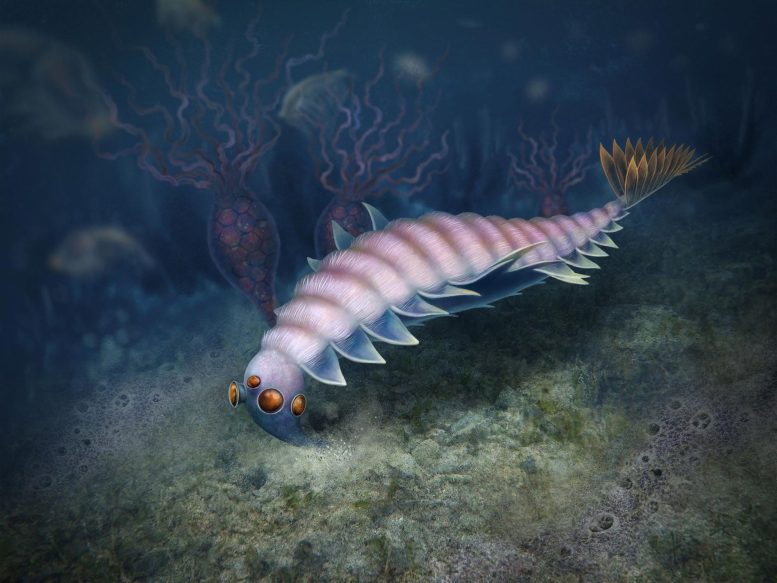
Artistic reconstruction of Utaurora comosa from the Wheeler Formation, Utah, USA (Cambrian: Drumian). Credit: Artwork by F. Anthony
In his book Wonderful Life, the late Stephen Jay Gould, former professor in the Department of Organismic and Evolutionary Biology at Harvard, popularized the “weird wonder” stem-group arthropods Opabinia and Anomalocaris, discovered in the Cambrian Burgess Shale, turning them into icons in popular culture. While the “terror of the Cambrian’ Anomalocaris – with its radial mouth and spiny grasping appendages – is a radiodont with many relatives, the five-eyed Opabinia – with its distinctive frontal proboscis – remains the only opabiniid ever discovered. That is, until now.
An international team of researchers led by Harvard University confirm that a specimen previously considered a radiodont is in fact an opabiniid. The new study in Proceedings of the Royal Society B used novel and robust phylogenetic methods to confirm Utaurora comosa as only the second opabiniid ever discovered and the first in over a century.
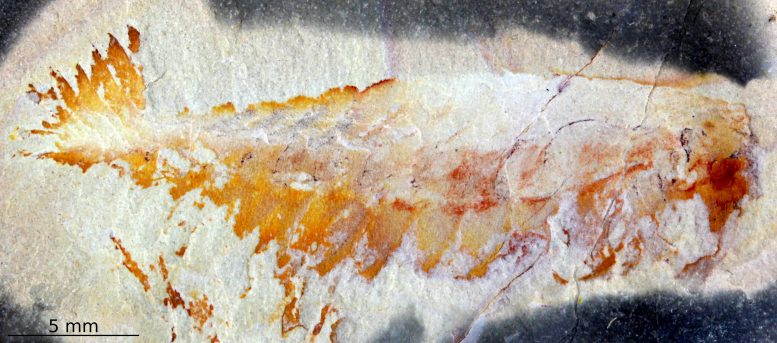
Utaurora comosa from the Wheeler Formation, Utah, USA (Cambrian: Drumian). Holotype and only known specimen, accessioned at the Division of Invertebrate Paleontology in the Biodiversity Institute at the University of Kansas. Credit: Photograph by S. Pates
Utaurora comosa, found in the 500 million-year-old middle Cambrian Wheeler Formation of Utah, was first described in 2008 as a radiodont. Co-lead author Stephen Pates, former postdoctoral fellow in the Department of Organismic and Evolutionary Biology (OEB) at Harvard, first encountered the specimen at the University of Kansas Biodiversity Institute & Natural History Museum while a graduate student. Pates was studying the diversity of radiodonts and felt this specimen did not exactly fit with a true radiodont. Upon joining senior author Professor Javier Ortega-Hernández’s lab in OEB, Pates worked with co-lead author Jo Wolfe, postdoctoral fellow in OEB who studies the relationships of fossil and living arthropods, to determine where Utaurora best fit in the tree of life.
Opabiniids are the first group to have a posterior-facing mouth. Their dorsal intersegmental furrows are precursors to full body segmentation and their lateral swimming flaps precursors to appendages. Utaurora shares characters and morphology with both radiodonts and Opabinia. While Utaurora’s anterior structure and eyes were poorly preserved – Opabinia is most recognizable from its frontal proboscis and five eyes, the intersegmental furrows along the back and the paired serrated spines on the tail were fully observed.
Limited morphological observations led Pates and Wolfe to use phylogenetic analysis comparing Utaurora with 43 fossils and 11 living taxa of arthropods, radiodonts, and other panarthropods.
“The initial phylogenetic analysis showed it was most closely related to Opabinia,” Wolfe said. “We followed up with more tests to interrogate that result using different models of evolution and data sets to visualize the different kinds of relationships this fossil may have had.”
Unlike Opabinia, which was discovered in the Cambrian Burgess Shale of British Columbia in Canada, Utaurora was found in Utah and, though still Cambrian, is a few million years younger than Opabinia. “This means Opabinia was not the only opabiniid, Opabinia was not as unique a species as we thought,” Pates said.
When Utaurora was first described as a radiodont in 2008 scientists thought opabiniids and radiodonts formed a monophyletic group called ‘dinocarids.’ But over the past 10 to 15 years scientists have discovered over 10 new species of radiodonts, making it possible to see that opabiniids and radiodonts are slightly different.
“We also have more phylogenetic tools to interrogate our results,” Pates said. “Based on the morphology alone you could make a case for Utaurora being a weird radiodont and also for bringing back the ‘dinocarid’ concept. But our phylogenetic dataset and analyses supported Utaurora as an opabiniid in 68% of the trees retrieved by analyzing the data, but only in 0.04% for a radiodont.”
“Wonderful Life and the description of these fossils happened before current evolutionary paradigms. The similarities between Opabinia and Anomalocaris weren’t really understood yet,” Wolfe said. “Now we know that these animals represent extinct stages of evolution that are related to modern arthropods. And we have tools beyond qualitatively comparing morphological features for a more definitive placement within the animal tree of life.”
Reference: “New opabiniid diversifies the weirdest wonders of the euarthropod stem group” by Stephen Pates, Joanna M. Wolfe, Rudy Lerosey-Aubril, Allison C. Daley and Javier Ortega-Hernández, 9 February 2022, Proceedings of the Royal Society B Biological Sciences.
DOI: 10.1098/rspb.2021.2093
Funding was provided by the Alexander Agassiz Postdoctoral Fellowship (Museum of Comparative Zoology at Harvard) and a Herchel Smith Postdoctoral Fellowship (University of Cambridge). Additional support was provided by the National Science Foundation (DEB-1856679).
This study highlights the exceptional value of museum collections for facilitating new scientific discoveries. Co-lead authors Pates and Wolfe would like to thank the Division of Invertebrate Paleontology in the Biodiversity Institute at the University of Kansas. “We are blessed to have been the home to professors Dick Robison and Bert Rowell and their student Margaret (Peg) Rees, who are experts on rocks and fossils of the Cambrian system; they along with the Gunther family collected numerous important fossils now housed here. These specimens are an invaluable resource for paleontologists to study and can lead to exciting results and discoveries of the type presented here in this important new paper by Pates, Wolfe et al.” Said Professor Bruce Lieberman, Senior Curator.

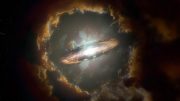
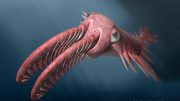
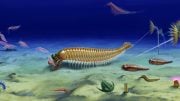
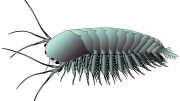
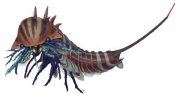
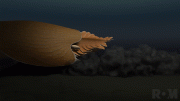
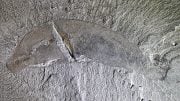
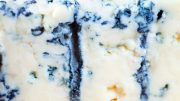
Be the first to comment on "“Weird Wonder” – A Century Later, Researchers Describe Second Opabiniid Ever Discovered"